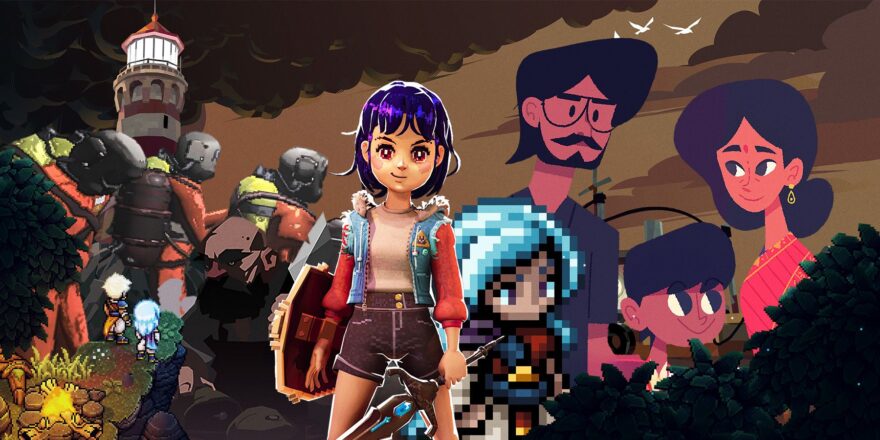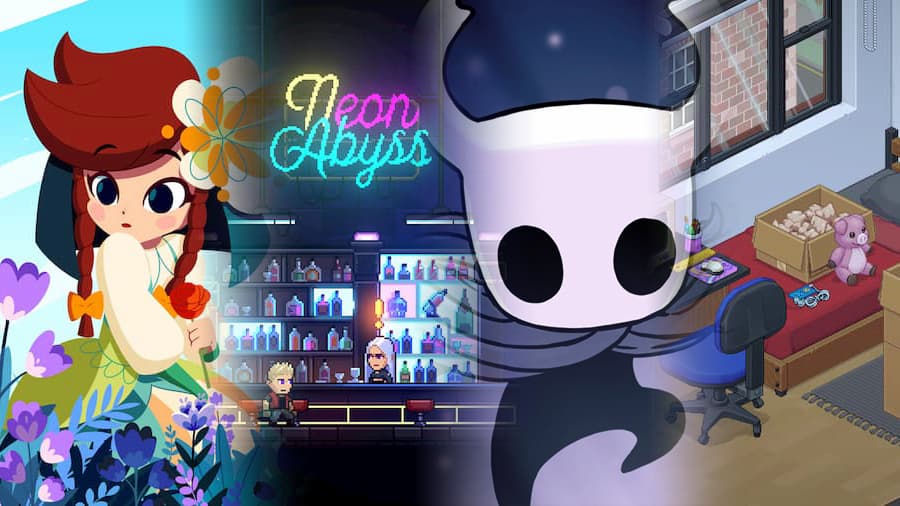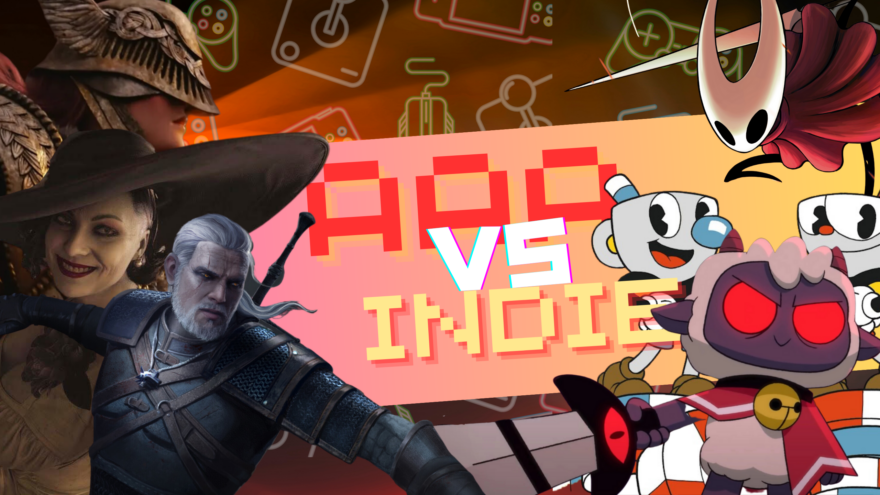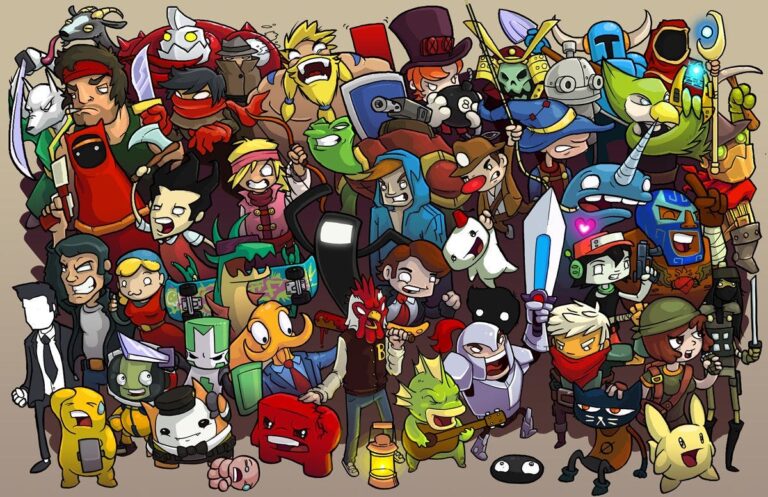In an industry often dominated by spectacles of high fidelity and grandiose worlds, a quiet yet momentous revolution brews within the pixelated corners of the indie game arena. Here, in these passionate indie projects, you’ll find the heart of gaming beating to a different drum—a drum that resonates with innovation and compelling narratives.
AAA titles, with their brimming war chests and colossal development armies, have long enjoyed the limelight, selling the dream of vast, immersive realities. However, despite their dazzling visuals and grand narratives, a sense of déjà vu pervades. There is little to distinguish some games from each other, as even some slots at Tower bet casino look more varied. Enter the indie game scene—a space where the shackles of convention are shattered and creativity soars unimpeded.
Let’s embark on an odyssey through the indie universe and discover why these digital Davids are giving the Goliaths a run for their money.
A Crucible of Creativity

In the indie forge, experimentation is the anvil on which new gaming experiences are hammered out. Without the pressing weight of big-budget stakeholders, indie developers thrive on experimental gusto. Titles such as “Braid” manipulate the fabric of time itself, while “Undertale” cheekily subverts RPG tropes, endearing players to its charm and wit. These inventive marvels are not one-off strokes of luck but the fruits of an industry segment that thrives on creative risks.
Intimately Crafted Tales
These pixelated storybooks aren’t just games—they are windows into the souls of their creators. Indie offerings like “Celeste” mirror the towering personal struggles regarding self-acceptance and mental well-being, while “That Dragon, Cancer” serves as a canvas for heart-wrenching autobiographical expression. Such narratives resonate deeply, etching a more profound impression in the player’s heart than the often superficial fireworks of AAA scriptwriting.
Forging Connections Beyond the Screen
Indie studios cultivate a symbiosis with their audience that’s rare in the AAA ecosystem. Through direct dialogue on social platforms and forums, they grow their games organically, rooted in community soil. This symbiotic relationship between creator and community fosters environments where feedback is more than noise—it’s an integral part of the developmental lifeblood.
Distribution Disrupted

Indies have maneuvered around traditional barriers to market entry, embracing digital storefronts like Steam, itch.io, and increasingly, subscription services such as Xbox Game Pass, as springboards into the gaming consciousness. Without the need for physical shelf space, these digital sandboxes have flung open the gates for indie developers to reach eager gamers across the globe.
Gameplay Galvanism
It’s not all about the narrative; indie games are also redefining how we play. Consider “Hollow Knight,” with its tight, intricate world design, or “Papers, Please”—a game that turns document stamping into a gripping examination of conscience. Therein lies the beauty of indie game design: it binds gameplay and message into a seamless garment, worn with pride in the gaming community.
A Mirror for the Majors

The success story of indie games has not gone unnoticed by the AAA studios. Forward-thinking giants are slowly echoing the indie approach, integrating intimate narratives, and ethical complexities into their polished universes. “The Last of Us Part II” exemplifies a AAA game influenced by indie ethos, daring to tug on the heartstrings and court controversy for the sake of a deeper message.
In this era of the indie gaming revolution, where small studios eclipse giants, the contrast between indie and AAA titles becomes increasingly pronounced. As we delve deeper into the realm of indie games, it becomes evident that they serve not only as alternatives but as crucial pillars in shaping the future of gaming.
One striking aspect of indie game development is the crucible of creativity within which these projects are forged. Unburdened by the constraints of large budgets and corporate expectations, indie developers thrive on experimentation. Games like “Braid” and “Undertale” are not mere entertainment; they represent daring endeavors to redefine gaming mechanics and narrative structures. The absence of commercial pressures allows for a fertile ground where innovative ideas can take root and flourish, leading to groundbreaking gaming experiences that captivate players with their uniqueness.
What sets indie games apart is the intimate connection they establish between creators and players through storytelling. Titles like “Celeste” and “That Dragon, Cancer” delve into deeply personal themes, offering players a profound and emotional journey. These narratives resonate on a human level, transcending the boundaries of traditional gaming experiences. In this way, indie games become not just forms of entertainment but windows into the diverse perspectives and struggles of their creators.
Indie studios also distinguish themselves by fostering a symbiotic relationship with their audience. Through direct engagement on social platforms and forums, developers invite players into the creative process. This collaborative environment transforms player feedback into an integral aspect of game development, shaping the evolution of titles and solidifying a sense of community that extends beyond the screen.
Distribution strategies have also been disrupted by indie developers, who have embraced digital storefronts and subscription services. Platforms like Steam, itch.io, and Xbox Game Pass provide indie games with unprecedented visibility, allowing them to reach a global audience without the need for traditional retail channels. This shift in distribution channels has democratized access to gaming, enabling indie developers to showcase their creations to a diverse and enthusiastic player base.
Indie games not only excel in storytelling and distribution but also redefine gameplay itself. “Hollow Knight” and “Papers, Please” exemplify how indie titles focus on intricate world design and gameplay mechanics, creating experiences that challenge and engage players in novel ways. The beauty of indie game design lies in its ability to seamlessly blend gameplay and message, presenting a cohesive and immersive garment that players proudly wear within the gaming community.
The impact of indie games has not gone unnoticed by AAA studios, which are gradually adopting elements of the indie approach. Games like “The Last of Us Part II” demonstrate a shift in the industry, incorporating intimate narratives and ethical complexities to deepen the overall gaming experience. The success of indie games serves as a mirror for the majors, reflecting a demand for meaningful storytelling and innovative gameplay mechanics that resonate with a diverse and discerning audience.
In Summary
The indie gaming narrative tells a tale where size does not equate to strength, and smaller studios are increasingly the authors of the most innovative and emotionally gripping experiences in gaming. As the boundary between indie games and blockbuster titles becomes increasingly nebulous, the remnants of a bygone delineation reveal a truth now universally acknowledged: indie games are not just holding their ground but are leading the vanguard of the gaming industry’s future.
With each pixelated leap and each story unfurled, indie games are reimagining what it means to captivate and innovate in the digital age. This is more than a fleeting insurrection; it’s the dawn of an era where the indie ethos redefines allure in gaming, proving that the most profound experiences often come from the most unexpected places.
Related Posts:
- 20 Best Gaming Headset Under 50$ 2024 - for PC, PS4,…
- Top 10 Best Modem For Gaming 2024 - For Optimum Gaming Speed
- Top 10 Best Paint Sprayer For Cabinets 2024 -…
- Top 10 Best Dog Nail Grinder 2024 - Best Care for Your Pet
- 15 Best Dog Food For Allergies 2024 - Adult, Puppy…
- 12 Best Car Wax For Black Cars 2024 - Protection and…







